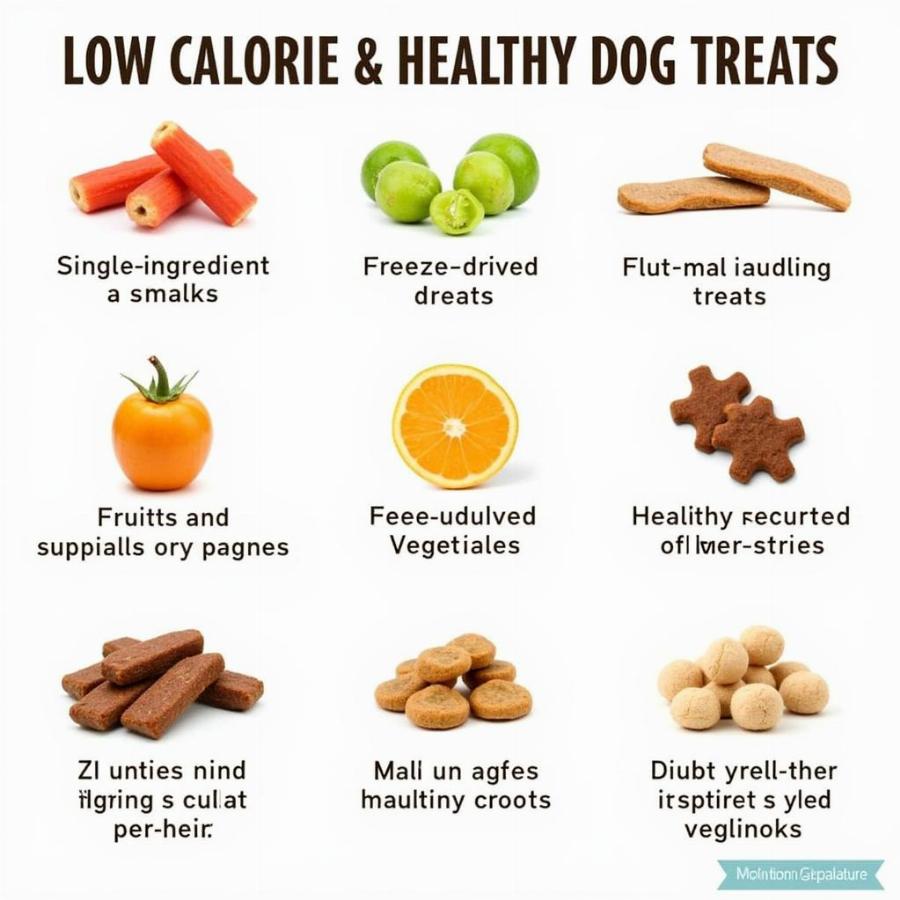Dog treats and bones are a staple in many dog-loving households. But with so many options available, it can be challenging to determine what’s best for your furry friend. This comprehensive guide will cover everything you need to know about dog treats and bones, from understanding their benefits and risks to choosing the right type and ensuring safe consumption. Let’s explore the world of dog treats and bones to ensure your canine companion enjoys these goodies safely and healthily.
Choosing the Right Dog Treats and Bones
Selecting appropriate treats and bones for your dog requires careful consideration. Factors such as your dog’s age, size, breed, and any existing health conditions play a crucial role.
Treats for Puppies and Senior Dogs
Puppies have delicate teeth and stomachs, so soft, easily digestible treats are ideal. Senior dogs may also benefit from softer treats due to potential dental issues. Avoid hard bones that could damage their teeth or digestive systems.
Breed-Specific Considerations
Some breeds are prone to specific health problems. For instance, smaller breeds might choke on large treats, while larger breeds may require more durable chews.
Health Conditions and Dietary Restrictions
Dogs with allergies or sensitivities require treats with limited ingredients. Always check the label for potential allergens. If your dog has diabetes or other health conditions, consult your veterinarian for suitable treat recommendations.
The Benefits and Risks of Dog Treats and Bones
While dog treats and bones offer several benefits, understanding the potential risks is equally crucial.
Benefits of Treats and Bones
- Dental Health: Chewing on appropriate bones and treats can help scrape away plaque and tartar buildup, promoting good dental hygiene.
- Mental Stimulation: Chewing can provide a healthy outlet for a dog’s natural chewing instincts, reducing boredom and anxiety.
- Training Aid: Treats are invaluable for positive reinforcement training, rewarding desired behaviors.
- Nutritional Supplement: Some treats provide added vitamins and minerals, supporting overall health.
Risks of Treats and Bones
- Choking Hazard: Improperly sized treats or bones can pose a choking risk, especially for smaller dogs.
- Digestive Issues: Some treats, particularly rawhide, can be difficult to digest, leading to blockages or stomach upset.
- Dental Damage: Extremely hard bones can fracture teeth.
- Weight Gain: Overfeeding treats can contribute to obesity.
Types of Dog Treats and Bones
The market offers a vast array of dog treats and bones. Understanding the different types can help you make informed decisions.
Natural Chews
These include bully sticks, rawhide, and antlers. While offering long-lasting chew time, some natural chews pose digestive risks. Always supervise your dog when they are enjoying these chews.
Dental Chews
Designed to promote dental health, dental chews often have a textured surface to help clean teeth. Many also contain ingredients that freshen breath.
Biscuits and Cookies
These come in various flavors and textures, from crunchy to soft. They’re great for training and quick rewards.
 Treats for Dogs on a Diet
Treats for Dogs on a Diet
Ensuring Safe Consumption of Dog Treats and Bones
Safety should always be paramount when giving your dog treats and bones.
Supervision is Key
Always supervise your dog when they are chewing on a bone or treat. This helps prevent choking and allows you to intervene if any issues arise.
Size Matters
Choose treats and bones that are appropriately sized for your dog. Avoid anything too small that could be swallowed whole or too large that could cause choking.
Moderation is Crucial
Treats should only make up a small portion of your dog’s daily caloric intake. Overfeeding can lead to weight gain and other health problems.
Can dogs eat porterhouse steak bones?
No, dogs should not eat porterhouse steak bones, or any cooked bones for that matter. Cooked bones become brittle and can splinter, causing serious damage to a dog’s digestive tract.
What are some good dog bone shape options?
Good dog bone shapes are those that are durable, non-splintering, and appropriately sized for the dog. Avoid cooked bones. Look for dog bone shape options that are designed for chewing, such as nylon or rubber bones.
What are some healthy dog bones treats?
Healthy dog bones treats can include dental chews, freeze-dried single-ingredient treats like sweet potato or chicken, and commercially available bones made from digestible materials.
Conclusion
Choosing the right dog treats and bones is essential for your dog’s health and happiness. By understanding the benefits, risks, and various types available, you can make informed decisions that support your dog’s well-being. Remember, moderation and supervision are key to ensuring your furry friend enjoys these tasty rewards safely. Always consult your veterinarian if you have any concerns about your dog’s diet or health.
FAQs
- How often should I give my dog treats? Treats should be given sparingly. Use them primarily for training and positive reinforcement.
- Are rawhide chews safe for my dog? Rawhide can pose digestive risks. Choose alternative chews like bully sticks or dental chews.
- What should I do if my dog chokes on a treat? Seek immediate veterinary attention.
- Can I make my own dog treats? Yes, many recipes are available online. Ensure they use dog-safe ingredients.
- How do I store dog treats? Store treats in a cool, dry place to prevent spoilage.
Do you have any other questions about dog treats and bones?
Check out these related articles on our website: corn dog sticks and best dog food for labrador retriever puppy.
Beaut Dogs is your trusted source for all things dog-related, offering expert advice and guidance on caring for your canine companion. From breed information to health and nutrition, we’re here to help you provide the best possible care for your furry friend. When you need assistance, please contact us via Email at [email protected] to receive detailed and accurate answers from Beaut Dogs. Visit us at https://beautdogs.com to learn more.